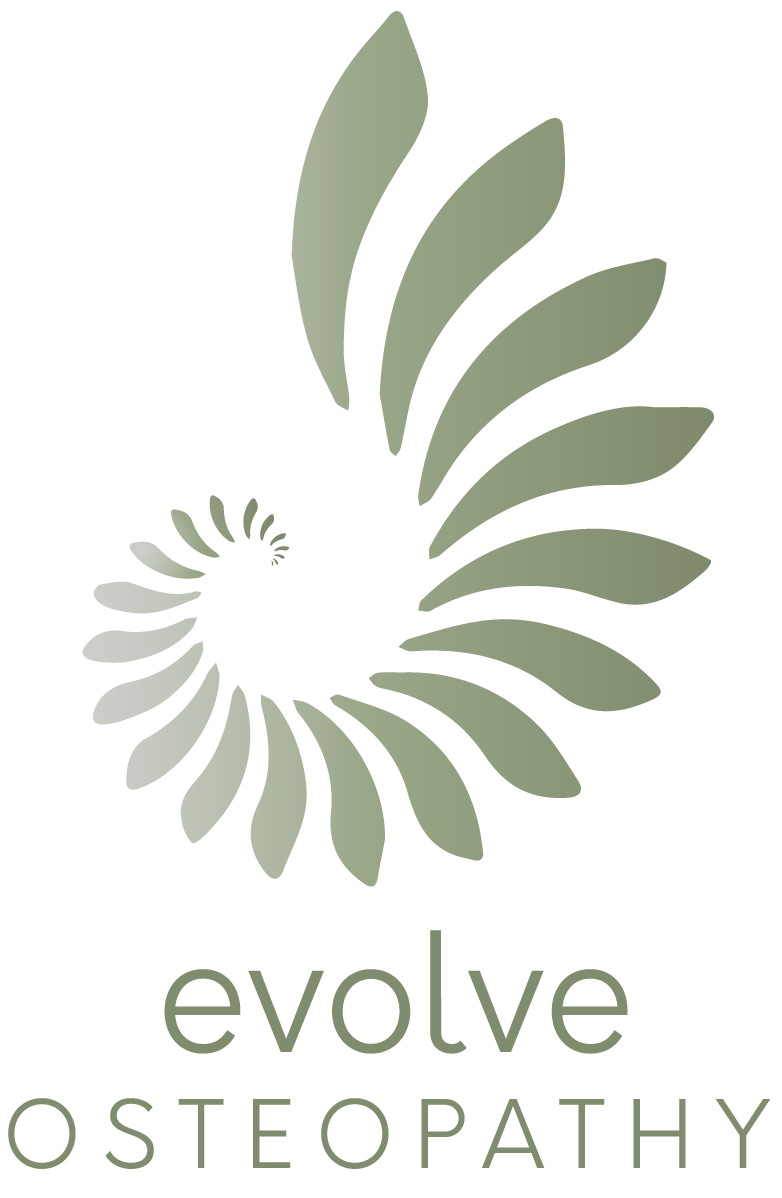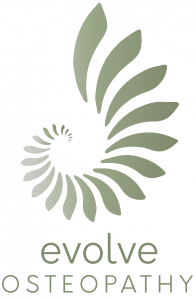Do You Have Forward Head Posture?
Forward head posture, also known as forward head carriage or anterior head carriage, is a postural finding that results in the protrusion of the head and neck forward from its normal alignment of the body. In today’s digital age, where many of us spend hours hunched over computers or looking down at our smartphones, forward head posture has become increasingly common. This blog aims to provide a deeper understanding of this finding, its causes and symptoms, the risks and consequences it can have on our overall health, and most importantly, how to correct it.
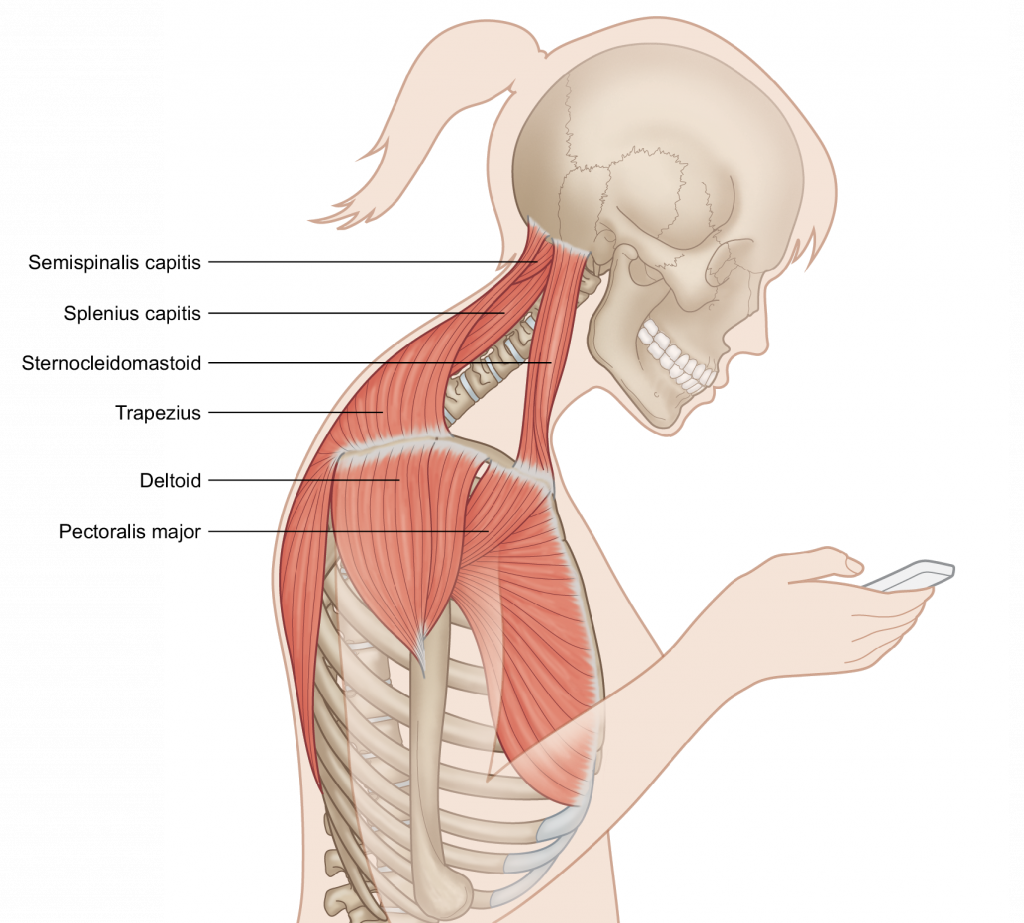
Understanding Forward Head Posture
Forward head posture occurs when the head is positioned excessively forward in relation to the body’s ideal alignment. Normally, the head should be balanced directly on top of the spine, with the ears aligned over the shoulders. However, poor postural habits, such as slouching, constantly craning the neck forward, or carrying heavy backpacks, can contribute to the development of forward head posture. Over time, the muscles and ligaments in the neck become imbalanced, leading to misalignment and strain.
To assess the degree of forward head carriage we can use the CHEK forward head caliper as shown below. Designed by Paul Chek, the CHEK Caliper measures forward head posture, cranio-cervical protraction and retraction. This patented device is used by CHEK Practitioners during the assessment of a client. By allowing accurate measurement of head carriage, the effect of a corrective exercise program can be objectively evaluated. We suggest that skilled CHEK Practitioners use this instrument.
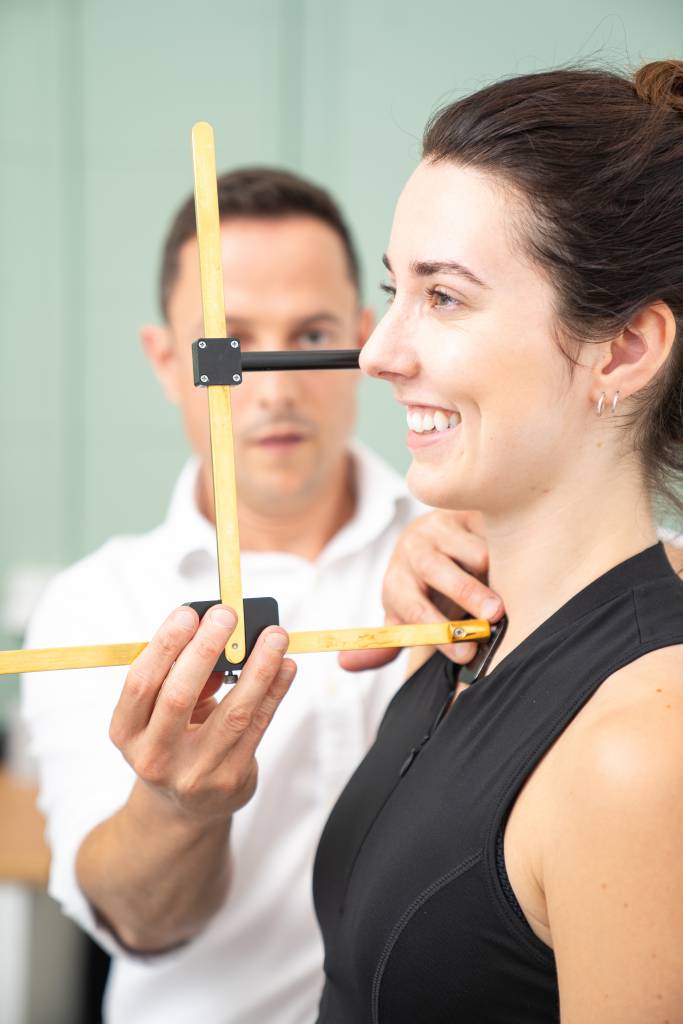
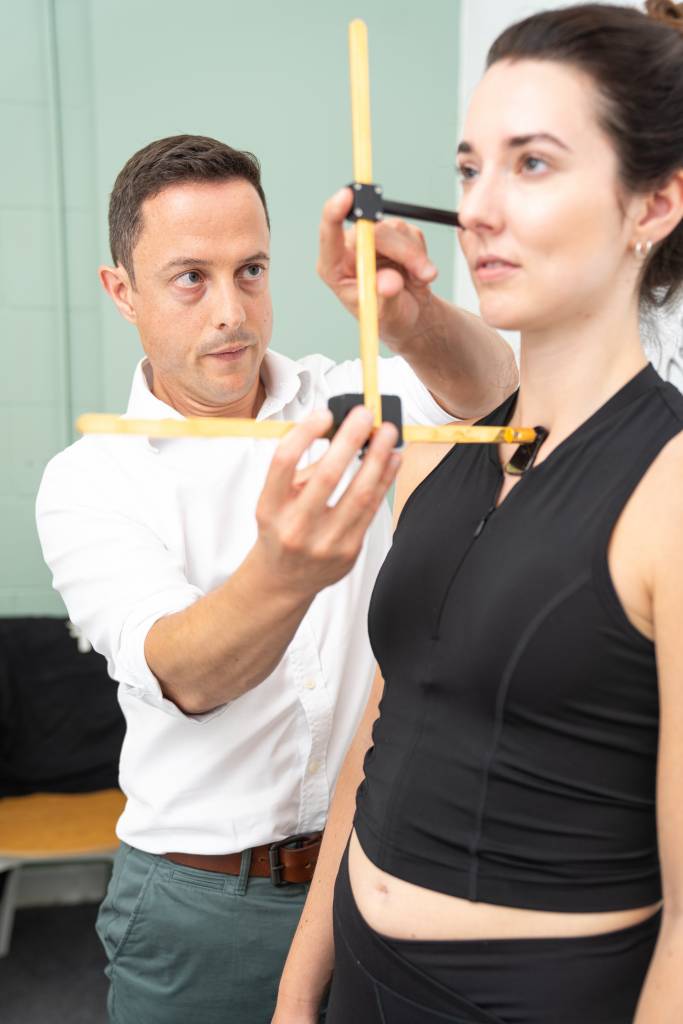

Common Causes and Symptoms
There are several common causes of forward head posture. One major factor is modern sedentary lifestyles, which encourage prolonged periods of sitting and poor posture. Additionally, activities that involve looking down for extended periods, such as reading, using a smartphone, or playing video games, can contribute to this condition. As for symptoms, individuals with forward head posture tend to experience neck pain, stiffness, headaches, and shoulder tension. They may also have rounded shoulders and a decreased range of motion in the neck.
The Risks and Consequences
Forward head posture can have various risks and consequences on our health. The misalignment of the spine caused by this condition can lead to increased pressure on the neck and upper back. This added strain can result in muscle imbalances, nerve impingement, and even joint dysfunction. In the long term, forward head posture can cause chronic pain, tension and discomfort. It can also affect the respiratory system, as the forward head position can restrict the airway and hinder proper breathing. Additionally, studies have shown a correlation between forward head posture and decreased lung capacity HERE HERE and HERE.
Correcting Forward Head Posture
Thankfully, forward head posture can be corrected through a combination of exercises, stretches, and lifestyle changes. Strengthening the muscles in the neck and upper back, while improving overall posture, is key to reversing this postural finding. Exercises for the deep neck flexors and extensors can help strengthen weak muscles and realign the head with the spine. A big factor in forward head posture is the mobility and posture of the thoracic spine (mid back). Spinal manipulation and self mobilisations at home can be used to improve stiffness there. The pelvis will also compensate for this posture by either posteriorly or anteriorly rotating therefore creating further muscle imbalances that will need correcting. Other lifestyle changes, such as taking frequent breaks from prolonged sitting, using ergonomic furniture, and practicing good posture throughout the day, can also be beneficial in correcting forward head posture.
Take Charge of Your Posture
Forward head posture is a common postural finding I find in clinic and also in our modern society, but it doesn’t have to be a permanent part of our lives. By understanding the causes, symptoms, risks, and consequences of forward head posture, we can take proactive steps to correct our posture and improve function and therefore less pain and dysfunction.
